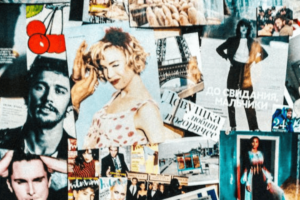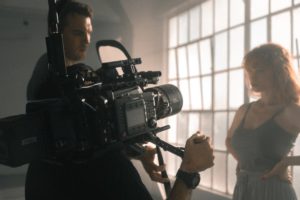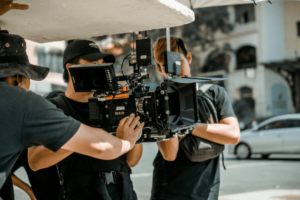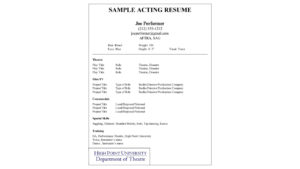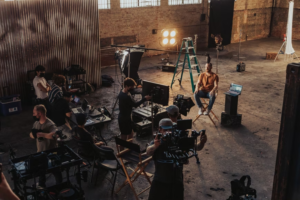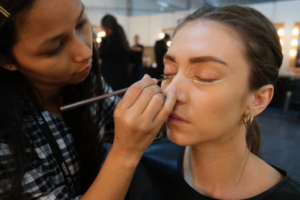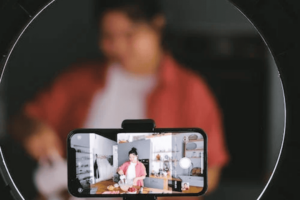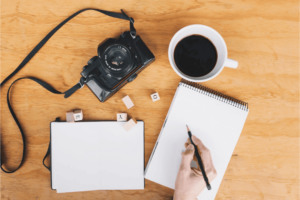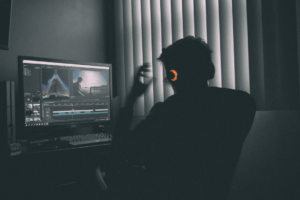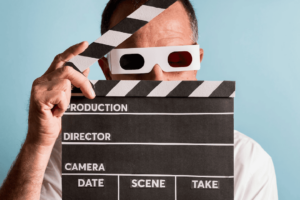Do you have a keen sense of aesthetics? Do you enjoy becoming involved in initiatives and collaborating with others? If yes, you may want to pursue a career as an art director.
Who is an Art Director?
The visual style and pictures in publications, newspapers, commercial packaging, and film and television projects are the job nature of art directors. They design a project’s overall look and direct those who work on the artwork or layouts.
Ad and PR firms, newspaper and magazine publishers, specialist design services firms, and the theatre, motion picture, and video industries employ art directors.
Video: Impact of Art Direction
What Does an Art Director Do?
An art director is a person who supervises the work of other designers and artists who create pictures for television, movies, live performances, ads, and video games. They decide on each project’s general style or tone and communicate that vision to artists who submit imagery such as illustrations, graphics, photography, charts, graphs, or stage and film sets.
Their work necessitates an understanding of project design aspects, the ability to encourage other creative professionals, and keeping projects on budget and on time. In addition, they are sometimes in charge of creating budgets and deadlines.
Video: What Does an Art Director do?
Role of an Art Director
An art director performs the following roles:
- Select the photographs, art, or other design elements to use to represent a concept visually best.
- Conceptualize and develop the look or style of an advertising campaign.
- Conceptualize and create the look or style of a theatre, television, or film set
- Supervise design staff and guide them in the right direction.
- Review and select the designs, artwork, photography, and graphics for the project.
- Interact with clients to develop an artistic approach
- Work with other artistic or creative departments to coordinate operations
- Create detailed budgets and timeframes
- Show designs to clients and get their approval.
Skills Required to Become an Art Director
Although art directors are assumed to have some graphic design judgment and technical understanding, hand-rendering layouts or drawing is not required. The most foundational work is now done on the computer.
Conceptual Skills: As an art director, you must have strong conceptual abilities. “To develop something important, you must start with a powerful idea,” says Kaitlyn Angstadt, senior art director at Brownstein Group, in an interview with MediaBistro. Commercial art is built on this foundation.
Communication: It’s also necessary to have good communication abilities. To deliver what you want, your team must first comprehend it. If you don’t express your vision clearly, you risk undermining the project’s quality.”
Taste for Art: Art directors operate in a wide range of businesses, and the work they undertake differs slightly depending on the industry.Most art directors determine the overall artistic style and visual image to be created for each project. They supervise a team of designers, artists, photographers, writers, or editors who are in charge of producing the individual works that make up a finished product.
You’re constantly on as an art director, according to Angstadt. There is never a period when you are not thinking of fresh ideas. Thus, it is critical to enjoy what you do. In addition, you must be able to handle criticism in this line of work and other creative vocations, even if you disagree with the input.
Qualities and Responsibilities of an Art Director
Creativity: Art directors need to be creative and imaginative to come up with fresh and engaging graphics, layouts, designs, and campaigns.
Communication: Art directors must be able to communicate ideas properly amongst departments and their personnel and freelancers. They should also share and listen to customers to ensure that they comprehend and meet their visual requirements.
Leadership: Art directors must assign, oversee, and encourage a team of artists and designers.
Flexibility: Art directors should keep up with shifting trends, mediums, and technology frequently. They must adapt to the changes in the sector.
Time Management: Art directors frequently work on numerous projects at once and must adhere to rigorous deadlines. They should be able to multitask and prioritize tasks with ease.
Attention to Detail: Art directors should have a keen eye for detail, considering everything from color to composition to text style and placement, among other things.
How to Get Hired as an Art Director?
Before getting hired as an art director, most art directors worked in another field for several years. For example, before becoming an art director, they may have worked as a graphic designer, fine artist, editor, photographer, or another art or design profession, depending on the industry.
Developing a professional-looking portfolio is crucial for many artists, especially art directors, to secure a job. When selecting whether to hire or contract for a project, big or small, agencies, directors, publishing houses, and clients all look at artists’ portfolios.
Job rivalry is predicted to be fierce in the future, as many creative designers and artists seek roles as art directors. Individuals with a solid visual design portfolio and conceptual work across all multimedia platforms will have the best chances.
The Workplace of an Art Director
Art directors, in a typical work environment, get involved with the following activities:
- Have a lot of social engagement
- Work with consumers
- Collaborate with creatives
- Take responsibility for the work of designers, artists, photographers, and others.
- Collaborate with groups or teams of people
- Assemble and work with groups
- Resolve disagreements about a project’s direction
- Communicate with clients
Although most art directors are self-employed, they work with designers and other visual effects or marketing team members. In a fast-paced office setting, art directors typically work more than 40 hours a week. They frequently work under pressure (and on weekends) to meet strict deadlines.
Tips to Become a Top-Notch Art Director
It is All About Working Together: Knowing when and how to employ diverse team members’ talents is essential for an art director’s work.
“No one is an island; design and studio life are rarely solitary endeavors; we’re all products and makers of our surroundings,” Brears explains. “It’s great to be able to create a beautiful illustration or piece of typography yourself, but it’s even better to have the foresight to recognize when it’s not you or your team’s strength, and then commission the right person for the job. The journey is just as important as the destination, and being able to communicate the whats, whys, and pit-stops along the way is crucial.”
Create a Standout Portfolio: As with any creative position, the first step is to ensure that your portfolio is in good shape. OneRedEye creator Ed Robinson advises, “Show an excellent design portfolio of work that illustrates the sort of art direction you employ and aspire to strive for.”
Brears’ counsel is a little more succinct: “I want to see fantastic ideas beautifully executed.” See this guide on how to curate a creative portfolio for more tips.
Do Not Get Too Caught up in the Hierarchy: While you will be in charge of people, the art director’s job is not about wielding power. “Someone who perceives themselves as the design top dog is bound to have a humiliating fall,” Fenton says. “You must be able to spot potential in others around you… A glorified manager is an art director who believes themselves in a position of hierarchical power.”
Have Faith in Your Feedback: You’ll need to be comfortable delivering comments both inside and outside of your studio if you want to be the greatest art director you can be. “Internally, providing comments and critique is a breeze. At Robot Food, there are no egos. “It doesn’t matter if the input comes from an intern or an account manager; as long as it helps us improve our job, it’s valid,” adds Brears.
External specialists, such as illustrators, photographers, and animators, can be more difficult to report back to. “You must overcome your personal impostor syndrome and be willing to advocate for the studio’s vision,” Brears adds.
“We want to work with the greatest people we can, and it’s easy to fall into the trap of believing they know everything and that your own expertise isn’t as valuable. But, in the end, you know the brief, the client, and the outcome you want to reach; now it’s just a matter of working together to get there.”
Meet New People: Of course, there is a lot to be learned from individuals who have previously held the position. “Make a beeline towards your heroes and ask to meet them. So many people enjoy talking about themselves, so make an appointment to meet with them for guidance, pick their brains, and view their work! “Theolin proposes. “Don’t be surprised, though, if your symbols turn out to be old, grouchy farts.”
Become Familiar With the Job: You will be molding the direction of projects and pushing the creative in new ways. So, you’ll need to stay on top of industry developments and trends and work hard to keep things interesting. “Keep up with blogs and trend reports,” Theolin recommends. “Maintain momentum and avoid becoming trapped in a bubble. One of the advantages of this industry is the opportunity to be creative, so get out there and try new things.”
Role of Art Directors in Different Fields
Publishing: The page layout of newspapers and magazines is usually overseen by art directors. They also select the artwork for book and magazine covers. This work frequently incorporates web publications.
In publishing, art directors usually collaborate with the editors. They collaborate on an idea for a publication’s sections and pages. The art director is primarily responsible for the publication’s aesthetic appearance, while the editor is ultimately accountable for the publication’s verbal and linguistic content.
Advertising and Public Relations: Art directors ensure that their clients’ chosen messages and images are communicated to the public. They are in charge of the overall visual features of an advertising or media campaign and coordinate the efforts of other artistic or design personnel, such as graphic designers.
An advertising art director is not always the leader of an art department, despite the position. In today’s advertising, an art director usually collaborates with a copywriter to form a creative team. An art director in advertising ensures that the client’s message reaches the intended audience. They are in charge of the visual arts of advertising and collaborate with other team members, such as graphic designers. In addition, they help develop an overarching concept for the commercial, mailer, brochure, or other forms of advertising.
A proficient art director is expected to have graphic design judgment and production technical expertise, but it may no longer be necessary for an art director to hand-render complete layouts or even draw. This is because currently, almost all, except the most preliminary work, is done on the computer.
A creative director, senior media creative, or chief creative director oversees the art director/copywriter team, except in the smallest firms. An art director may supervise other art directors and a team of junior designers, image developers, and/or production artists in a large organisation, as well as coordinate with a distinct production department.
Movie Production: Art directors work closely with directors to identify what settings are required for the film and what style or look the sets should possess. Then, to finalize designs, they engage and supervise a team of assistant art directors or set designers.
In the hierarchy of a film art department, an art director works directly beneath the production designer, in partnership with the set decorator and set designers. The administrative parts of the art department make up a substantial part of their responsibilities. They’re in charge of delegating jobs to people like the art department coordinator and the construction coordinator and keeping track of the art department’s budget, schedule, and general quality control. In addition, they frequently serve as a liaison with other departments, particularly those in charge of building, special effects, property, transportation (graphics), and locations.
Wilfred Buckland coined the phrase “Art Director” back in 1914 to address the head of the art department (hence the Oscars Award for Best Art Direction), which included the set decorator. The production designer and set decorator are now included in the prize. David O. Selznick felt that William Cameron Menzies’ participation in the look of Gone with the Wind was so important that the title of art director was insufficient. So, he granted Menzies the position of “Production designer.” Although the term suggests control over every visual aspect of a film, it is currently used as the designation for the head of the art department.
Pilar Revuelta and Eugenio Caballero Won the Academy Award for Art Direction in the Movie “ Pan’s Labyrinth” in the year 2007. Image Source: NetWorth Roll
Salary of an Art Director
Art director salaries vary greatly depending on criteria such as years of expertise and the organization’s size. Working as an art director for a large corporation, for example, can easily make six figures per year. Click on the payment link for the most up-to-date salary information from Indeed.
- In the United States, the average annual wage is $75,957.
- Salary ranges from $19,000 to $150,000 per year in some cases.
How to Become an Art Director?
Graduate with a Bachelor’s Degree: Choose a degree in an art form, such as graphic design, while in college. This will set the tone for the rest of your career. If possible, take other classes that will help you succeed in this industry, such as web design, marketing, or business management.
Get Hands-On Experience: Begin your career as a photographer, artist, graphic designer, editorial or advertising assistant, or other creative professions with an internship or entry-level position. The experience you gain and the connections you create can help you progress your career in this industry.
Think About Getting a Master’s Degree: You could seek a master’s degree in fine arts or a related profession if you wish to advance your abilities and knowledge. While it is not always mandatory, doing so may help you succeed in your career or qualify for more coveted positions. A master’s degree may also make it easier to negotiate a higher wage.
Create a Portfolio: Create a portfolio that showcases your best work throughout the course of your career. Begin establishing your portfolio in college and keep it up to date as your work progresses. Select projects that reflect your personality, talents, and abilities.
Advance in your Career: You are qualified to apply for the art director position if you have at least five years of professional creative experience and management experience. Create a solid CV, portfolio, and references to help you land an interview and a job offer.
Example of an Opening for an Art Director
An experienced art director is needed to head a team of brilliant photographers, illustrators, and graphic designers at our organization. The art director’s job will be to develop creative layouts and designs that successfully communicate our clients’ messages. This person should be enthusiastic about design, have a good eye for detail, and be capable of working across a variety of media platforms. Candidates must have a Bachelor of Fine Arts or equivalent degree and at least five years of experience in a creative management position.
Conclusion
To sum it up, art directors provide the glitz, glamour, aesthetic and grit to a film. However, their job is to ensure that their art direction seamlessly fits and complements the world of cinema without overshadowing it.
